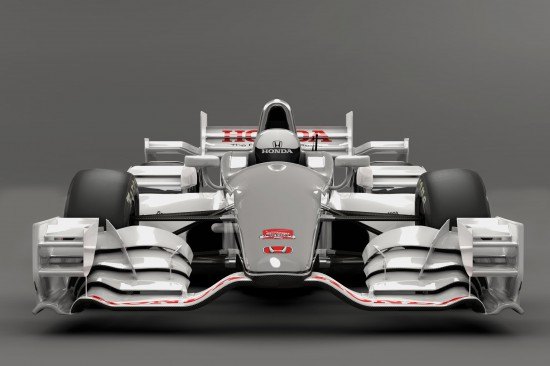10 Views
Honda Unveils Wild Aero Kit For 2015 IndyCar Season
by
Cameron Aubernon
(IC: employee)
Published: March 11th, 2015
Share
After years of spec racing, IndyCar has decided to allow the manufacturers to shape the game for 2015. Honda, for its part, isn’t holding back.
Cameron Aubernon
Seattle-based writer, blogger, and photographer for many a publication. Born in Louisville. Raised in Kansas. Where I lay my head is home.
More by Cameron Aubernon
Published March 11th, 2015 10:00 AM
Latest Car Reviews
Read moreLatest Product Reviews
Read moreRecent Comments
- SCE to AUX This is why PTCs were invented, like those used in the motors for windshield wipers and power windows.
- Ras815 The most interesting small detail I picked up from the brochures: in 1960, there was a Cadillac dealer on the Grand Concourse in the Bronx. How times would change in that area just a few years later...
- Bee Actually will be moving up that way soon around end of October, and bringing my 2008(9) Premier Sable with me, so glad to know there are some local spare parts kicking around. Most of what I read in this article is spot on. On my end Microsoft Sync was (and still is) god awful, the buttons didn't last as long as I'd have liked (both the window controls and the O/D button have broken at least once), and the lacking interior lighting in spite of how spacious the interior is makes road trips a bit tricky should anyone drop something into the abyss. On the flip side, the air conditioning is better than any car I've bought since (and this is in Texas heat so I take a/c seriously), I have been keeping a consistent 30mpg on highway drives, and the interior has been able to handle everything I've thrown at it. With it running almost as well as in 2009, it's been a hard car to even consider getting rid of, with all the room and conveniences, it's sad to have seen them cut the cord on this division.
- Doc423 Not in my lifetime.
- MRF 95 T-Bird Find a beat up Volvo 122s wagon with a good rear section. Build a pickup (El Volvomino) by grafting it on the back of this one.





































Comments
Join the conversation
It's actually sort of pretty in an ugly sort of way. I haven't followed formula racing since watching midget racers at the airport as a kid, but I think a basic formula that would encourage technology transferable to consumer vehicles would be awesome. Here's a shot at a simple formula: 1. No mechanical components may replaced or rebuilt for the entire season (obviously consumables like tires, brake pads, oil don't count here). -- this would influence design toward durability and reliability. 2. Fuel quantity is limited such that it is possible, even likely, that some cars will run out of fuel and not finish. -- this would influence design toward fuel economy while allowing free reign regarding weight, materials, aerodynamics, etc. More detailed rules could be added for each formula or series, but these two rules would apply throughout.
Can't wait until one of these crashes* ... wings flying EVERYWHERE!! It'll surely make it on to YouTube. * with no on injured, of course